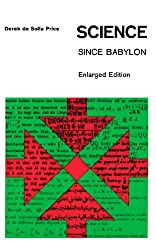
Rating: 8.0/10.
Book containing several mostly independent essays about aspects of science, mostly from a historical and sociological perspective. The first essay compares Greek and Babylonian science: Greeks were more geometric while Babylonians were good at calculations, but when their cultures came in contact, new ideas emerged combining their sciences to predict astronomical motion.
Essays 2 and 3 were about historical efforts to build clocks and other mechanisms, usually for fun and without any economic or scientific purpose. Many cultures had similar devices, and initially the Greeks were thought to lack this kind of mechanical technology, until the discovery of the Antikythera mechanism (which the author helped decode). Essay 4 was an oddball about ancient astrology, numerology, mystic symbolism, etc; I was surprised to find a serious scientist engaging in these topics.
The next few essays are more relatable as they deal with topics in modern science. Essay 5 talks about the invisible supporting roles that enabled the giants like Newton: the printing press made it possible to disseminate research quickly, and the artisans who made scientific instruments.
Essay 6 talks about the relationship between science and technology, and their differences. Science is the creation of knowledge; technology is creation of gadgets that can be sold. Scientists want to spread their knowledge; technologists want to keep it to themselves and monetize it. Essay 7 talks about a period in the 1890s when X-rays and radioactivity was being discovered; N-rays were another proposed form of radiation and many papers were written about them until they were debunked by Robert Wood.
Essay 8 notes the exponential growth of science since the 1700s and its implications. Scientific output has been doubling every 10 years or so, no matter how you measure it (number of journals, papers, active scientists, etc). The consequence is that individual scientists make increasingly marginal contributions and subfields become more and more isolated from each other and the broader community. However, the essay was written in the 1960s, and we don’t get to see if the projected exponential growth continued or not.


